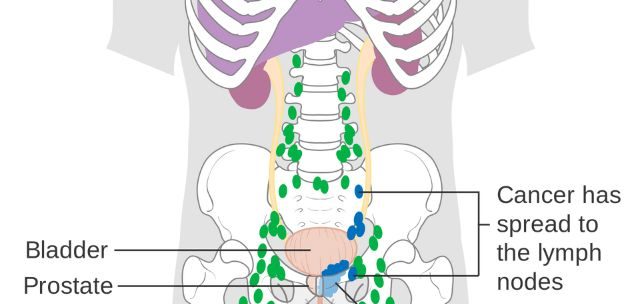 New research suggests that most men delay treatment for prostate cancer. Credit: Cancer Research UK / Wikimedia Commons / CC BY-SA 4.0
New research suggests that most men delay treatment for prostate cancer. Credit: Cancer Research UK / Wikimedia Commons / CC BY-SA 4.0New research shows that more Americans with early-stage prostate cancer are opting for active surveillance instead of surgery or radiation, which are the standard treatment options. This means that men with low- or intermediate-risk prostate cancer are closely monitored for any signs of progression that may require treatment later on.
The number of low-risk prostate cancer patients who have chosen active surveillance has increased from 16% to approximately 60% since 2010, according to the study. For intermediate-risk patients, surveillance has also risen from about 8% to 22% during the same period.
The trend seems to reflect the advice of professional societies, which have been recommending active surveillance of low-risk cancers for more than ten years. Dr. Bashir Al Hussein Al Awamlh, the lead author of the study and a urologic oncology fellow at Vanderbilt University Medical Center in Nashville, Tennessee, says that the rise in active surveillance is due to these recommendations.
The main objective of ‘active surveillance
Study shows that almost half of low- and intermediate-risk patients who choose to monitor their prostate cancer instead of getting treatment will likely need treatment within a decade, said Dr. Bashir Al Hussein Al Awamlh.
However, monitoring cancer carefully with blood tests, imaging, and biopsies can help prevent it from progressing. The primary aim of this active surveillance approach is to avoid exposing patients to side effects from radiation or surgery that can negatively impact urinary and sexual function.
How is the US doing with #activesurveillance for #prostatecancer?
Our new SEER analysis on AS use & factors associated with it in @JAMAInternalMed:
➡️AS Rates *increased* to 60% for low-risk & 22% for Fav IR cancer by 2018!@jeshoag @DanBarocashttps://t.co/IXZLy7OcgD pic.twitter.com/xbJjKaCwSO
— Bashir Al Hussein Al Awamlh (@BashirAlHussein) April 3, 2023
Dr. Yaw Nyame, an assistant professor at the University of Washington School of Medicine, cautions that all prostate treatments can affect patients’ quality of life, causing problems with urination, bowel function, and sexual function.
Some side effects may even be life-changing, with surgery involving a 15% chance of incontinence and a 50% chance of erectile dysfunction within five years of treatment.
Catching cancers before they progress
Doctors can catch low-risk cancers before they become dangerous with active surveillance, according to Al Hussein Al Awamlh. When cancer is considered low-risk, it means the chances of it spreading are small, and doctors can identify it before it gets worse.
How do doctors know if a patient has low- or intermediate-risk prostate cancer versus aggressive late-stage cases that need immediate treatment? Dr. Al Hussein Al Awamlh said doctors determine this based on factors like tumor size, biopsy results, blood tests, and whether cancer has spread beyond the prostate.
Since the early 2000s, studies have shown that active surveillance is safe for those diagnosed with low- or medium-risk prostate cancer, according to Nyame. Only about 3% of those who choose surveillance end up with advanced stage 4 cancer over 10 years, and less than 1% die from the illness.
For this reason, both Al Hussein Al Awamlh and Nyame emphasized that public health guidelines, such as those set by the National Comprehensive Cancer Network, strongly recommend that doctors promote active surveillance as a viable option over immediate treatment when it is appropriate.

 1 year ago
70
1 year ago
70











 English (US)
English (US)